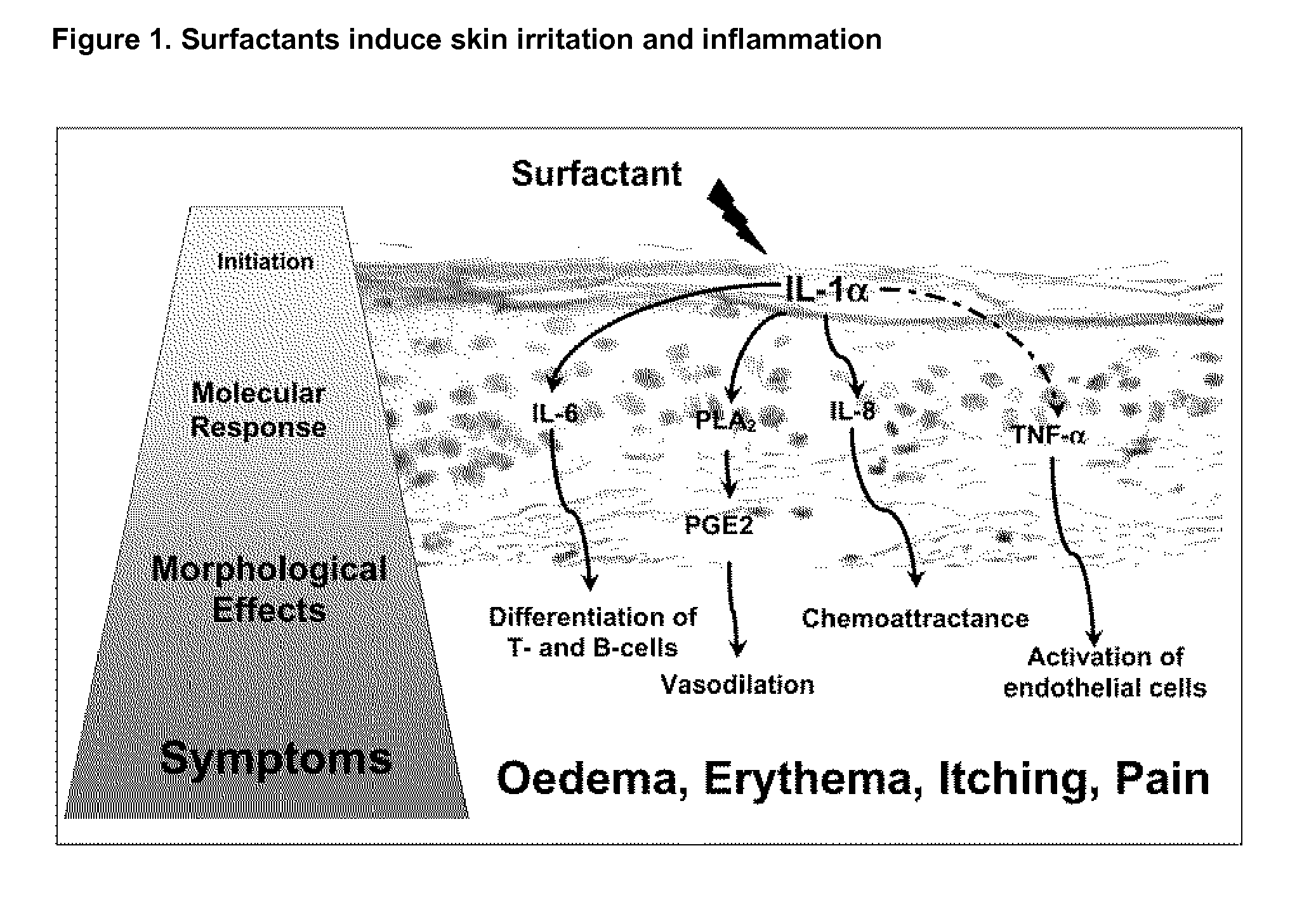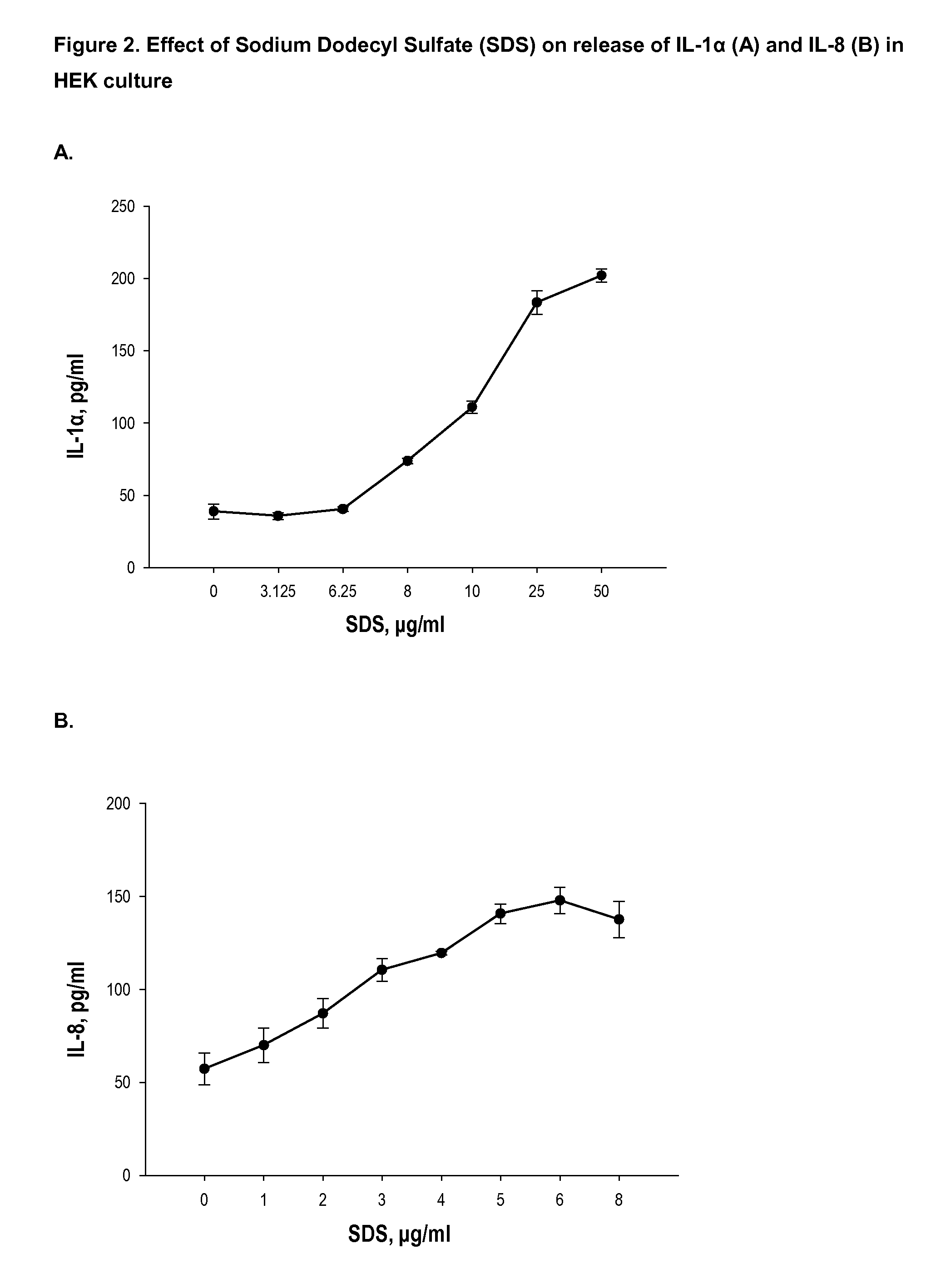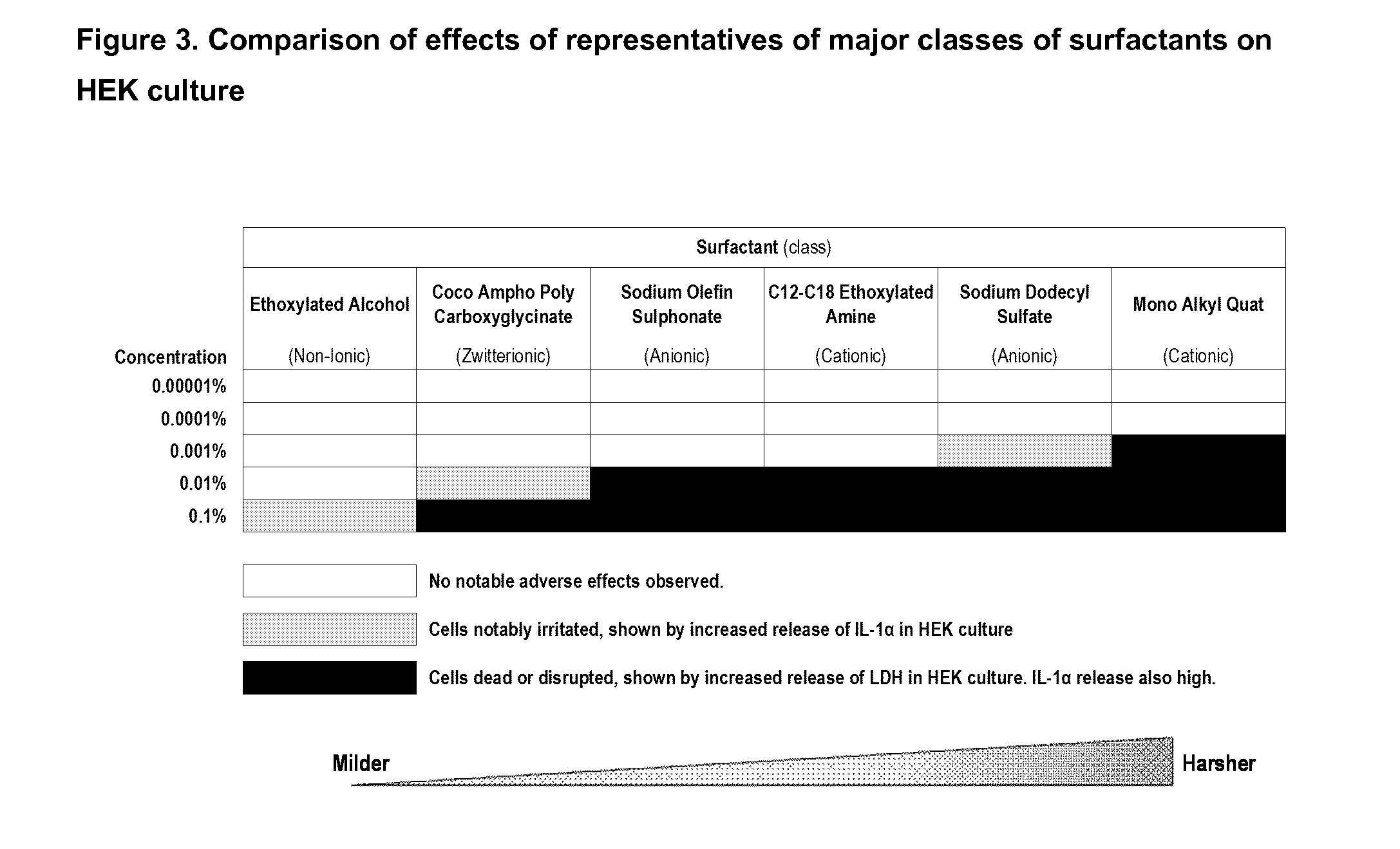Bioactive Botanical Compositions and Uses Thereof
a bioactive botanical and composition technology, applied in the field of compositions and methods for mitigating inflammation and irritation induced by surface active compounds, can solve the problems of complex biological responses such as inflammation and irritation, affecting the stability of the plasma membrane, and altering the properties of the medium, so as to inhibit the inflammation of biological tissue
- Summary
- Abstract
- Description
- Claims
- Application Information
AI Technical Summary
Benefits of technology
Problems solved by technology
Method used
Image
Examples
example 1
Sodium Dodecyl Sulfate (SDS), as a Benchmark Anionic Surfactant, Dose-Dependently Induces Inflammatory Cytokine IL-1α and Chemokine IL-8 in Human Epidermal Keratinocyte (HEK) Culture
[0083]Sodium dodecyl sulphate (SDS) is an anionic surfactant widely used in personal care and cleansing products. SDS, which is a well-known inducer of experimental irritant contact dermatitis, has been shown to stimulate multiple cytokine release including IL-1α and chemokine IL-8 in epidermal skin cells (Craig et al., JID 115:292, 2000; and Chung et al., JID 117:647, 2001). To validate the cell culture model for evaluation of inflammatory response induced by surfactants, SDS was used as a benchmark anionic surfactant to induce inflammatory mediators including IL-1α and IL-8 in HEK.
[0084]The protocols for the growth and treatment of human primary epidermal keratinocyte (HEK) cultures are as follows. HEK and all cell culture supplies were obtained from Life Technologies Co. (Carlsbad, Calif.). The cell...
example 2
Comparison of the Mildness of Selected Commercially Available Surfactants Including SDS Based on Cytotoxicity and Release of IL-1α
[0086]To evaluate different classes of surfactants for their ability to induce skin cell damage and inflammatory response, six representatives of four different classes of commercially available surfactants were ranked based on cytotoxicity data from LDH assay and induction of primary inflammatory cytokine IL-1α release in HEK.
[0087]The protocols for the growth of HEK are described under Example 1. In place of SDS, a range of concentrations of six different surfactants was used.
[0088]As shown in FIG. 3, the tested surfactants are listed in the order of increasing harshness: Ethoxylated Alcohol, Coco Ampho Poly Carboxyglycinate, Sodium Olefin Sulphonate, C12-C18 Ethoxylated Amine, Sodium Dodecyl Sulfate, Mono Alkyl Quat. The concentrations given are percent in HEK cultivation medium (KGM), assuming “as supplied” surfactant material as 100%.
example 3
An Ethoxylated Alcohol, as an Example of Nonionic Surfactant, Induces Dose-Dependent Release of IL-1α, but not IL-8, in HEK
[0089]Based on the mildness ranking of the surfactants in Example 2, ethoxylated alcohol was ranked as the mildest surfactant of those tested. It is widely used in general purpose and high pressure cleaning formulations, and in household hard surface cleaning. Its functions include cleanser, emulsifier, micro emulsion, and wetting. Therefore, we tested the ethoxylated alcohol as a representative mild nonionic surfactant to induce inflammatory cytokine IL-1α and chemokine IL-8 in HEK.
[0090]The protocols for the growth of HEK are described under Example 1. Instead of SDS, the keratinocytes were exposed to a range of concentrations of ethoxylated alcohol for about 16 hours.
[0091]As shown in the FIG. 4, the ethoxylated alcohol at 500-1000 μg / ml demonstrated significant (p<0.001) induction of IL-1α. This concentration range was used as induction doses in the rest of ...
PUM
 Login to View More
Login to View More Abstract
Description
Claims
Application Information
 Login to View More
Login to View More - R&D
- Intellectual Property
- Life Sciences
- Materials
- Tech Scout
- Unparalleled Data Quality
- Higher Quality Content
- 60% Fewer Hallucinations
Browse by: Latest US Patents, China's latest patents, Technical Efficacy Thesaurus, Application Domain, Technology Topic, Popular Technical Reports.
© 2025 PatSnap. All rights reserved.Legal|Privacy policy|Modern Slavery Act Transparency Statement|Sitemap|About US| Contact US: help@patsnap.com



